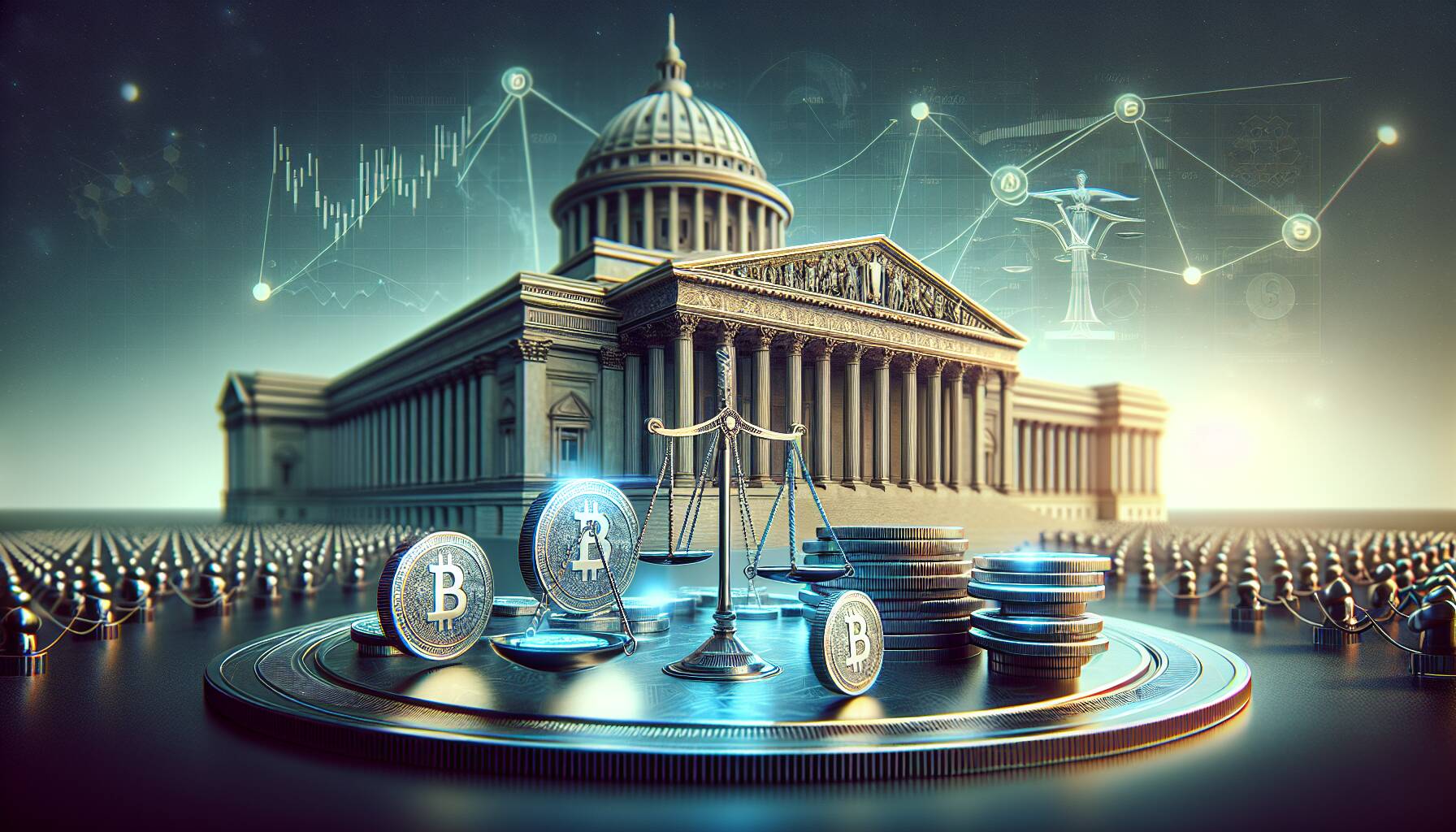The U.S. Congress is making strides in shaping the future of the cryptocurrency landscape, with a swift focus on finalizing a much-anticipated stablecoin oversight bill. On Wednesday, the House of Representatives unveiled the text of its version of the bill, following successful committee approval of a similar proposal in the Senate. This legislative push marks a significant step toward establishing regulatory clarity in the realm of digital finance.
At the forefront of this effort is Rep. Bryan Steil, who chairs the House Financial Services Committee’s crypto panel, alongside Rep. French Hill, the committee’s Republican chair. Their joint proposal, known as the Stablecoin Transparency and Accountability for a Better Ledger Economy Act, or the STABLE Act, aims to regulate how companies can issue dollar-backed digital tokens—efforts that Steil claims will “close the gap” between the House and Senate bills.
“This is a strong continuation of our work on digital assets in the last Congress,”
noted Hill, underscoring the continuity of legislative efforts to govern cryptocurrencies. The Senate Banking Committee has already favored its own version of the legislation with a resounding bipartisan vote, moving the bill closer to a full Senate review.
In related news, Rep. Tom Emmer, a leading advocate for cryptocurrency regulation in Congress, reintroduced his Securities Clarity Act on the same day. This bill seeks to clarify how crypto assets fit within the existing framework of securities law, a necessary step in defining the regulatory environment for digital currencies. Emmer’s initiative, which was part of last year’s Financial Innovation and Technology for the 21st Century Act, was put forward alongside Democratic Representative Darren Soto.
Both bills emerged as key topics during the DC Blockchain Summit, a prominent crypto policy event where lawmakers expressed optimism about finalizing the stablecoin initiative by August. The looming deadline emphasizes a sense of urgency among Congress members, as they recognize the crucial role of regulation in fostering innovation in the cryptocurrency sector. Furthermore, as the summit concluded, attention turned to the Senate, which was preparing for a critical vote regarding a resolution aimed at overturning the IRS’s 2024 regulations for decentralized finance (DeFi) brokers.
With both the House and Senate having previously passed this resolution, the anticipation builds around U.S. President Donald Trump’s expected endorsement, aligning with the broader trend of legislative movements within the crypto sphere.

Key Points on U.S. Congress and Stablecoin Regulation
The U.S. Congress is focusing on advancing legislation that impacts the crypto industry, particularly regarding stablecoins and securities. Here are the key points regarding this development:
- Stablecoin Oversight Bill
- The House of Representatives has released its version of a stablecoin oversight bill.
- Rep. Bryan Steil and Rep. French Hill are leading this initiative.
- The bill aims to regulate the company’s ability to issue dollar-denominated digital tokens.
- Compatibility with Senate Version
- The House bill is designed to “close the gap” with the Senate version to ensure a cohesive regulatory framework.
- A bipartisan vote has already advanced the Senate’s version of the legislation.
- Digital Assets Regulation
- The legislation is referred to as the STABLE Act, representing an ongoing effort from the last Congress to regulate digital assets.
- Rep. Tom Emmer advocates for clarity in securities law as it pertains to crypto assets through his reintroduced Securities Clarity Act.
- Timeline for Legislation
- Lawmakers aim to finalize the stablecoin legislation by August.
- The stability and regulatory clarity of crypto assets could significantly impact their adoption and use in daily transactions.
- Impact on Tax Regulations
- The Senate is preparing to vote on a resolution to overturn IRS regulation regarding decentralized finance brokers.
- This resolution reflects ongoing debates about how cryptocurrency and DeFi should be taxed.
The push for stablecoin regulation and clarity in crypto securities law is crucial for consumers and businesses alike. It could lead to increased confidence among investors and users, potentially resulting in broader adoption and innovation within the cryptocurrency sector.
The Latest on U.S. Crypto Legislation: Analyzing the House Stablecoin Bill
The ongoing discussions in the U.S. Congress around cryptocurrency, particularly the release of the House’s version of the stablecoin oversight bill, signal a critical moment for the digital asset industry. While there’s a palpable sense of urgency to finalize legislation, it’s essential to analyze how these developments stack up against previous news in the crypto regulatory space. Notably, the bipartisan support for both the House and Senate versions suggests a unique alignment that could present both opportunities and challenges for various industry stakeholders.
One of the significant competitive advantages of the House bill lies in its collaborative nature, uniting leads from both major parties. This bipartisan backing enhances the legitimacy of the proposed regulations and may lead to smoother negotiations as differences between the House and Senate are ironed out. Additionally, the focus on transparency and accountability within the STABLE Act reflects a responsiveness to market needs, appealing to investors and companies seeking stability amidst the volatility commonly associated with cryptocurrencies. This is particularly beneficial for institutional investors looking for clearer frameworks to operate within.
However, the primary disadvantage could stem from the potential for overregulation. Stricter compliance requirements might stifle innovation, particularly for smaller firms that lack the resources to meet new demands. This could create hurdles for start-ups looking to enter the stablecoin market, ultimately consolidating power among established players who can better absorb regulatory costs. Consequently, while the bill may protect consumers and bolster the trustworthiness of stablecoins, it may inadvertently hinder competition in the burgeoning crypto landscape.
The implications of these developments extend to various industry participants. For established cryptocurrency companies, the clarity that the oversight brings is a double-edged sword: it could enhance their position by regulating less compliant entities, yet it might also limit their operational flexibility. On the flip side, budding startups and innovative projects might find themselves in a precarious position, facing the risk of becoming non-viable due to new compliance burdens. It’s a tightrope walk where clarity meets constraint, highlighting the critical balancing act the Congress faces while shaping the future of digital asset legislation.
Moreover, figures like Rep. Tom Emmer, who champion the need for frameworks that define crypto assets, have argued that legislation should not only protect consumers but also foster innovation. However, the push and pull between regulation and innovation must be handled delicately. The next steps taken by Congress will be crucial, as they could either empower the crypto ecosystem or create barriers that stymie its growth. Depending on how these legislative outcomes unfold, various factions within the crypto industry will need to brace themselves for either enhanced support or regulatory obstacles in the coming months.
















